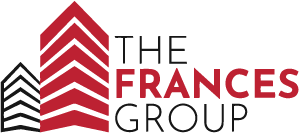Revenue Growth Rate Expected To Slow After Strong Start to the Year
U.S. hotel industry revenue per available room in the first quarter was 16.7% higher than it was in the same quarter of 2022. This stronger-than-expected result was driven by a healthy average daily rate increase of more than 10.2% year over year.
However, industry performance is likely to downshift significantly over the course of 2023, which goes hand in hand with an expected recession. CoStar’s annual hotel industry RevPAR forecast calls for only 3.7% year-over-year growth for full-year 2023.
As the overall economy is experiencing a slowing in inflation as measured by the Consumer Price Index, ADR growth has also slowed. In the first quarter of 2022, ADR had increased by 38.3%.
Slowing growth rates are evident on the high end of the hotel market. Luxury-class RevPAR increased 12% in full-year 2022 compared to the prior year, but this growth rate decreased to only 1.2% in the first quarter year over year. The sharp slowdown likely can be attributed to a variety of factors. Luxury hotel rates recovered strongly coming out of the recession, and operators expected normalization of growth sooner than later.
As the global pandemic nears its official end in the U.S., many high-end travelers are quite comfortable going abroad again and spending their dollars elsewhere. In addition, corporate travel demand and group attendance is still on the rebound, and the average rate in the first quarter included these lower corporate negotiated rates. In contrast, a year ago, the high luxury rates were almost exclusively generated by higher-rated leisure rates.
On the other hand, upper-upscale hotels, often located in urban settings with ample meeting space and full-service food and beverage offerings, are also benefiting from the return of corporate travelers. RevPAR at hotels in this class segment increased 28.3% in the first quarter year over year. Luxury hotels had the largest deficit to make up to get back to 2019 results. But despite the robust quarterly RevPAR growth, pre-pandemic occupancy results remain elusive as occupancy is still almost six points below results in the first quarter of 2019.
Pipeline room counts have not changed much in the quarter, or the year. Around 150,000 rooms were under construction and this room count will likely decelerate somewhat as regional banks could rethink their exposure to lodging construction. This would then lead to a ballooning of the room count in the final planning stage and a deceleration in the number of hotel rooms in construction.
Transaction volume in the first quarter dropped sharply to $7 billion, compared to more than $15 billion in the fourth quarter of 2022. Just like in the construction industry, a slowing in lending on hotel debt could lead to more uncertainty for owners and possibly some distressed sales later in the year. As one industry participant commented: “If you don’t have to sell today, you don’t sell.”
With a recession in the forecast and a further interest rate hike from the Federal Reserve likely, hotel industry participants are bracing for a slower year ahead. But if the performance in 2020 has shown anything, it is that the American leisure traveler should not be underestimated in their appetite for travel. Therefore, hotel demand and ADR growth are expected to slow but not expected to sharply deteriorate.
Author Credit: Jan Freitag, CoStar Analytics
